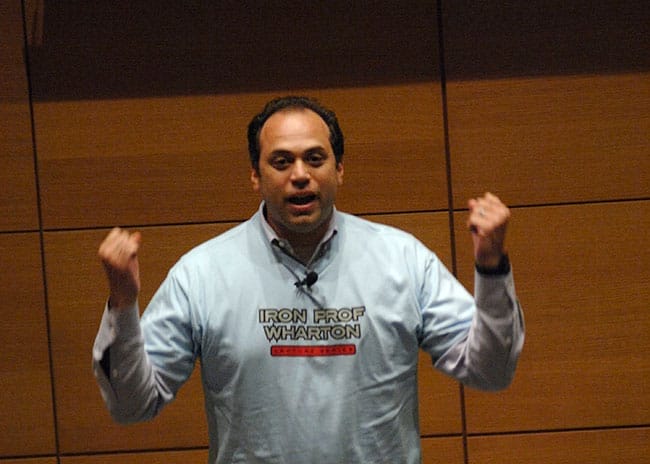When Wharton undergrads Adina Luo and Molly Liu (both W’16) had an idea for a custom-tailored denim start-up, they used Kickstarter to propel Black Box Denim into existence. When their classmates wanted to give parents a way to monitor their child’s temperature remotely, they turned to Indiegogo to fund their fledgling company Fever Smart.
These students tell an increasingly familiar story. Crowdfunding has exploded in popularity since 2009 (the year Kickstarter launched), and its pace shows no signs of slowing. Although its most obvious beneficiaries are the individuals or small teams who’ve gained unprecedented opportunity for start-up success, Ethan Mollick, Wharton’s Edward B. and Shirley R. Shils Assistant Professor, argues that the trend poses important implications for established firms as well.
One key development has been what Mollick likes to call the “democratization of innovation.” Innovation is always limited by who controls the money. Venture capitalists, the traditional gatekeepers, fall prey to all kinds of biases; they tend to favor someone who is male, well-connected or located near the VC firm, for instance. Crowdfunding provides a way for inventors to circumvent these obstacles and, in some cases, vault clear over them. Studies have shown, for example, that women actually tend to perform better than men when crowdfunding tech startups.
“Crowdfunding allows a much more democratic view of who gets access to capital and which innovations come to light. It’s leading to an explosion of exciting new forms of innovation,” Mollick says.
Crowdfunding has made it so that just about any idea can get funded; that doesn’t mean every idea should get funded. (We’ve all heard about that potato salad guy.) Remarkably, Mollick’s research has shown that the crowd is pretty good at picking winners. In a study co-authored with Ramana Nanda of Harvard Business School, he found significant overlap in how expert judges from the National Endowment for the Arts rated theater projects compared to the crowd. Mollick has also done survey work evaluating the success of gadget-related projects. Although many deliver results behind schedule, 90 percent of the projects that raise more than $5,000 ultimately turn into ongoing ventures. One-third ends up hiring employees and generating over $100,000 in revenue after just a year or two.
This is all very exciting for every would-be entrepreneur with nothing more than an idea and a dream. But why should established firms take the crowdfunding phenomenon seriously?
Mollick points out that, in the past few decades, studies show “huge amounts of the key innovations that have come out of industrial labs actually start as user innovations.” Users have long been a key (if undervalued) driver of innovation at large firms. When users can suddenly raise capital to develop their ideas themselves, firms get cut out of this action.
There are a few approaches that Mollick recommends large companies take.
First, since crowdfunding sites make projects so public, firms can use them to identify promising investment opportunities.
Secondly, firms can monitor activity on these sites to gauge new market opportunities or trends in customer demand.
Finally, there’s the adage that if you can’t beat ‘em, join ‘em—or, rather, invite them to join you. Crowdfunding sites overflow with creative, enterprising people. Why not use Kickstarter to help identify your next brilliant new employee?
Watch Mollick explain his research for himself below:
Editor’s note: The original version of this post appeared on Feb. 9, 2015, on the Mack Institute News page.
Read Related Articles


























